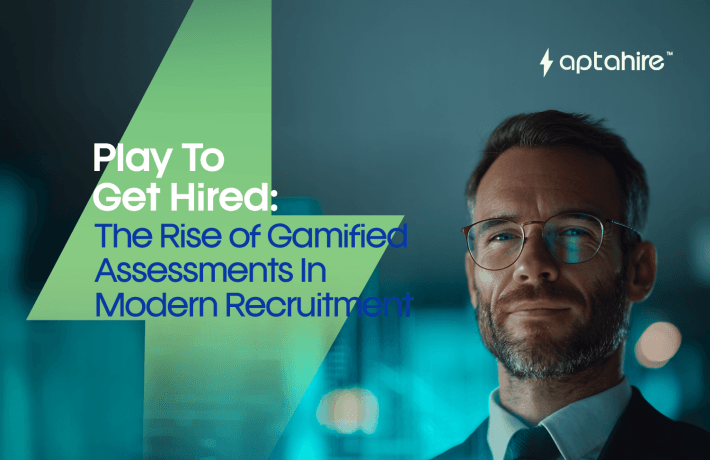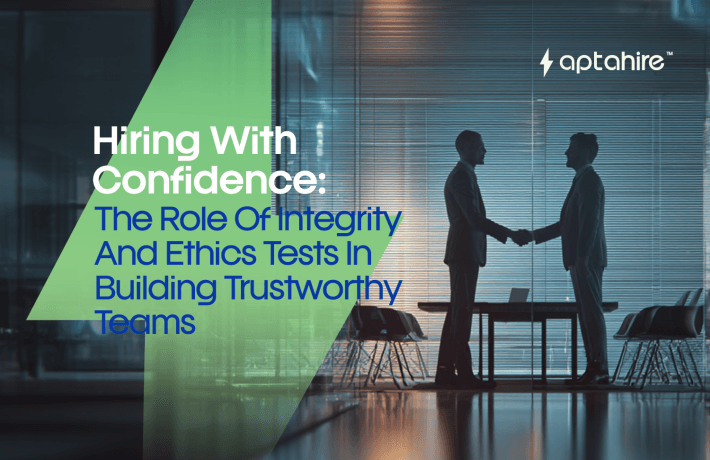ROI Breakdown: How AI Recruiting Tools Cut Hiring Costs by 30%

Hiring great talent is crucial, but it isn’t cheap. Between advertising jobs, screening resumes, conducting interviews, and onboarding new employees, the cost of recruitment adds up fast. In fact, according to SHRM, the average cost per hire is around $4,700, but that number can easily double depending on the role.
Enter AI recruiting tools, the tech revolution that’s transforming the hiring process, not just for big enterprises, but increasingly for startups and SMBs too. One of the most eye-opening benefits? They can reduce hiring costs by up to 30%, or more.
But how exactly do AI tools help companies achieve this level of savings? Let’s break it down in a detailed, conversational, and ROI-focused way.
The Traditional Hiring Cost Breakdown
Before we look at how AI changes the game, it’s worth understanding where the bulk of your hiring costs typically come from:
| Hiring Expense | Cost Impact |
| Job postings & recruitment marketing | High |
| Recruiter or agency fees | Very High |
| Time spent by internal HR teams | Medium to High |
| Screening & assessment costs | Medium |
| Interview coordination | Medium |
| Onboarding & training | Medium |
| Cost of a bad hire | Extremely High |
Now imagine streamlining or eliminating many of these with automation, intelligent insights, and faster processes, that’s where AI recruiting tools step in.
Where the Savings Happen: A Detailed ROI Breakdown
Let’s unpack how AI recruiting tools cut hiring costs by 30%, with real-world scenarios and numbers.
1. Reduced Time-to-Hire = Lower Overhead Costs
Traditional Method:
Recruiters may take 4–8 weeks to fill a role, especially in competitive industries. Every extra day means more time spent on sourcing, screening, and coordinating.
With AI:
AI tools can cut the time-to-hire by 40–60% by instantly analyzing resumes, shortlisting candidates, and even scheduling interviews.
ROI Angle:
- For every open role, companies lose productivity and pay for recruiter time.
- Let’s say your internal HR spends $200/day on recruitment operations. If AI cuts 15 days from the process, that’s $3,000 saved per hire.
2. Resume Screening Automation = Saved Man-Hours
Traditional Method:
A recruiter manually scans hundreds of resumes, taking ~6–7 seconds per resume. For 500 resumes, that’s almost an entire workday gone.
With AI:
Resume parsing tools and intelligent matching algorithms screen resumes in seconds, based on skills, experience, and job fit.
ROI Angle:
- If a recruiter’s time costs $50/hour, AI saves around 6–8 hours of manual screening per role.
- That’s $400 per role, multiplied across dozens of hires = huge time and cost savings.
3. Better Candidate Fit = Reduced Cost of Bad Hires
Traditional Method:
Bad hires cost companies up to 30% of that employee’s annual salary, according to the U.S. Department of Labor.
With AI:
AI uses behavioral assessments, predictive analytics, and performance history to evaluate fit more accurately, reducing the chance of hiring the wrong person.
ROI Angle:
- Let’s say you avoid just one bad hire (at a $60K salary), that’s $18,000 saved.
- AI reduces the bad hire rate by even 10–15%, saving thousands over time.
4. Improved Sourcing Efficiency = Lower Advertising Costs
Traditional Method:
Posting on multiple job boards and platforms racks up marketing costs.
With AI:
Some AI tools identify which platforms bring the best candidates, automatically optimize job ads, and tap into passive candidate databases.
ROI Angle:
- Cut your job ad spend by 20–30%.
- If you’re spending $1,000 per role on job ads, AI can help bring that down to $700 or less.
5. Interview Automation = Fewer Hours Spent on Logistics
Traditional Method:
Coordinating interviews, follow-ups, and feedback cycles takes time. Multiply that by 4–5 rounds per candidate.
With AI:
Chatbots and AI assistants automate communication, schedule interviews, and even conduct initial video interviews.
ROI Angle:
- Save 2–3 hours per candidate in coordination time.
- For a team handling 10 candidates, that’s 20–30 hours saved = up to $1,500 saved per role (based on team hourly rates).
6. Scalability = Hiring More with Less
Traditional Method:
Scaling your hiring efforts means hiring more recruiters and HR personnel.
With AI:
You can scale hiring volume without scaling your HR team. AI recruiting tools handle the heavy lifting, allowing your team to focus on high-value interactions.
ROI Angle:
- Let’s say your company doubles hiring goals.
- Instead of hiring 2 more recruiters ($60K/year each), you invest $10K/year in an AI tool.
- That’s a $110K saving per year.
Real-Life Example: How a SaaS Company Cut Costs by 35%
A mid-sized SaaS company used Aptahire (an AI recruiting platform) to manage its talent pipeline. Here’s what changed:
- Time-to-hire dropped from 34 days to 14 days.
- Screening time cut by 70%.
- Interview scheduling fully automated.
- Attrition rate reduced by 20% due to better candidate-job fit.
Result? The company cut its annual hiring spend by over $120,000, representing a 35% reduction in hiring costs.
Final Words: The AI ROI is Real, and Growing
AI recruiting tools aren’t just “nice to have” anymore, they’re a strategic business investment. From slashing operational costs and boosting hiring speed to improving the quality of hires and reducing turnover, the ROI is both tangible and scalable.
If your business hires more than a handful of people a year, investing in AI recruiting tech pays for itself, often within the first few months. And as hiring becomes more competitive and talent pools more complex, AI tools are no longer the future of recruiting, they’re the present advantage.
Want to See the ROI of Your Business?
If you’re curious about how much your company could save by adopting AI in hiring, tools like Aptahire offer ROI calculators, onboarding support, and scalable pricing options to fit your needs.
Cutting costs, saving time, and hiring smarter, it’s all within reach.
FAQs
1. How exactly do AI recruiting tools reduce hiring costs?
AI recruiting tools reduce costs by automating time-consuming tasks such as resume screening, candidate sourcing, and interview scheduling. This minimizes manual effort, reduces time-to-hire, and improves candidate fit—leading to fewer bad hires and lower attrition costs.
2. What percentage of cost savings can companies realistically expect?
On average, companies report up to 30% in cost savings using AI-powered hiring solutions. This varies based on company size, hiring volume, and how well the tool is integrated into the recruitment workflow.
3. Is the initial investment in AI hiring tools expensive?
Not necessarily. Many AI recruiting platforms offer subscription-based or usage-based pricing that’s often far more affordable than expanding your internal recruitment team or outsourcing to agencies. The ROI is typically seen within the first few months.
4. Can AI tools replace human recruiters?
No. AI tools are designed to assist and enhance the recruiter’s role—not replace it. While AI handles repetitive, administrative tasks, human recruiters focus on relationship-building, final evaluations, and decision-making.
5. How do AI tools reduce the risk of bad hires?
AI tools use predictive analytics, behavior assessments, and data-driven scoring models to evaluate whether a candidate aligns with the role’s requirements and company culture—leading to better-quality hires and lower turnover.
6. What specific tasks do AI recruiting tools automate?
AI recruiting tools can automate:
- Resume screening and shortlisting
- Candidate sourcing and outreach
- Job ad optimization
- Interview scheduling and reminders
- Initial video assessments
- Communication via chatbots
- Feedback collection and analytics reporting
7. How fast can a company see ROI after implementing AI in hiring?
Most companies see a positive ROI within 3–6 months, depending on their hiring volume and how deeply the AI tool is integrated into their recruitment process.
8. Are AI recruiting tools suitable for small and mid-sized businesses (SMBs)?
Absolutely. In fact, SMBs benefit the most because AI helps them scale hiring without having to hire large HR teams. It levels the playing field by giving them access to enterprise-grade recruiting power at an affordable cost.
9. Can AI recruiting tools help with diversity hiring and unbiased screening?
Yes. Properly trained AI tools can help reduce unconscious bias by focusing on skills, experience, and data rather than subjective factors. Some tools are specifically designed to support diverse and inclusive hiring practices.
10. What should companies look for when choosing an AI recruiting tool?
Key things to consider include:
- Ease of integration with your existing HR tech stack
- Features for automation and analytics
- Candidate experience
- Scalability and customization
- Security and data compliance
- Support and training provided by the vendor



